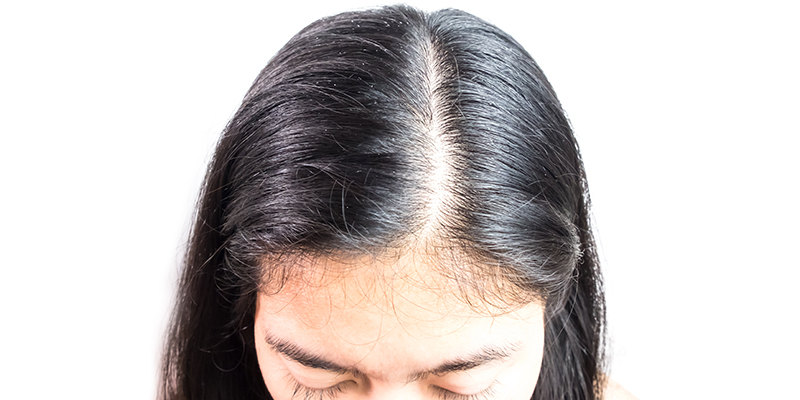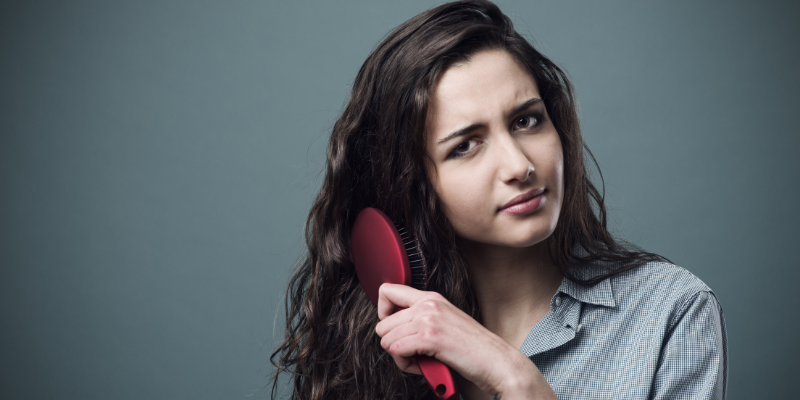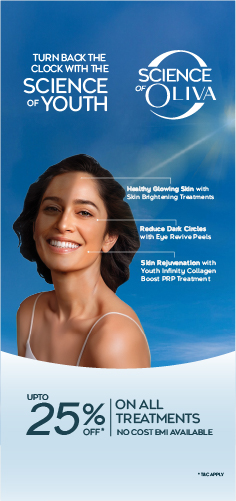In This Article
How To Reduce Excess Sebum Production On The Scalp?
While we often worry about oily hair and skin, did you know that to have healthy skin and hair, we require a certain amount of natural oil? Without a sufficient amount of oil, your scalp would be subject to dry and flaky skin. Learn about the role of sebum in maintaining hair health and tips to prevent its excess production in this article!
In This Article

What Is Sebum?
Sebum is the natural oil produced by your body that seeps out through the pores on your skin and scalp. It plays a vital role in preventing moisture loss from the skin and has antimicrobial properties as well.
Though sebaceous glands are present all over the body, they are present densely on the scalp, face and upper trunk. Sebaceous glands, located under the surface of the skin, produce sebum when they disintegrate. The oil is a complex mixture of lipids like glycerides, fatty acids, squalene and cholesterol. Though sebum is essential, it can also cause problems if it is produced in excess by the body.
What Is The Role Of Sebum?
Sebum helps our body in the following ways:
- It reduces water loss from the surface of the skin.
- It protects the skin from infections.
- It helps regulate the immune system of the skin along with a bacteria, i.e. P.acnes that reside in the pores.
Can Sebum Build-up Cause Hair Loss?
A healthy scalp is an essential factor for healthy hair. Though excess production of sebum and its build-up on the scalp, is not directly linked to hair loss; but its association with dandruff can lead to hair fall.
Seborrhoeic dermatitis is a type of inflammation in the areas rich in sebaceous glands, e.g. scalp. It is not just due to excess production of sebum, but excessive colonisation of a resident fungus called Malasezzia and defect in the immune system, together play a role.
Associated with itching and flaking of the scalp; it may result in physical damage to the hairs and inflammation around the hair follicles that may result in the weakening of the attachment of the hairs into the skin.
If you notice dried or hardened sebum, it is an indication of an unhealthy scalp and an increased possibility of hair loss due to a higher risk of secondary infections and damaged hairs.
It is critical to ensure that there is a balanced production of sebum. Both increased and reduced production can lead to unnecessary problems related to your hair and skin.
What Causes Sebum Build-up On The Scalp?
There are specific triggers or regulating factors determining the sebum production which include –
• Hormones:
The sebaceous gland cells and the hair follicle cells around it convert the hormone testosterone (predominant male hormone, though present in females as well but in lesser amount) into an active form, i.e. DHT (dihydrotestosterone). This stimulates the enlargement of the sebaceous cells and triggers excess production of sebum, leading to a build-up on the scalp.
• Diet – Food products with a high glycemic index, e.g. white bread and white rice can trigger the sebum production by stimulating the secretion of specific growth factors. An unhealthy and poor diet can also lead to the overproduction of sebum.
• Scalp Hygiene
Your hygiene routine plays a crucial role in avoiding sebum deposits on the scalp. Many people believe that repeatedly washing your hair damages it. However, the fact is that people with an oily scalp due to excess sebum production should wash their frequently with mild shampoos. When you use shampoos with harsh chemicals regularly to wash your hair, you end up removing all the natural oils from the scalp, which are essential to maintain the texture of your hair. It may lead to increased brittleness and roughness of hair. The frequency of shampooing should depend on the greasiness of the scalp.
Also Read: What Are The Types Of Scalp Infections
How To Reduce Sebum Production On Scalp?
Sebum production varies for everyone depending on the sebaceous gland activity. What you eat also affects the production of sebum on your scalp and the strength of your hair. You need to consume a healthy diet that includes vitamin and protein-rich foods and antioxidants. You should avoid the intake of foods with a high glycemic index. This ensures that your hair remains strong and healthy, helping you avoid any hair loss problems.
Washing your hair regularly with the right kind of shampoo prevents the accumulation of sebum on the scalp. Pay more attention to the hair products that you use, such as shampoos, conditioners, serums and gels. They may contain harsh chemicals that rob the essential natural oils from your scalp.
How To Clean Sebum Plugs From The Scalp?
The first step in cleaning sebum plugs from the scalp is to wash your scalp with warm water. Next, use a mild shampoo while gently massaging your scalp with your fingertips. This helps loosen all the hardened and dried sebum on the scalp. Excess build-up of sebum occurs on the scalp rather than hair strands. So while cleansing the scalp, let the shampoo flow through your strands and avoid rubbing your hair aggressively. Rinse with warm water, and you can finish by using a conditioner.
Top 5 Tips To Reduce Excessive Sebum Production On Scalp:
Before you adopt any of the tips to clear sebum from scalp listed below, consult your dermatologist who can provide the right guidance for you.
- Ideally, washing your hair twice in a week is sufficient to maintain a clean scalp. However, if you tend to have a sebum build-up on your scalp, your dermatologist may advise you to increase the frequency of hair wash.
- Do not use hot water when you are washing your scalp. Instead, opt for lukewarm water and gently massage your scalp with the tips of your fingers.
- Always try to air-dry your hair instead of using a dryer as the heat from a hairdryer can cause excess dryness of scalp and stimulate the sebaceous glands.
- Always try to find the root cause of the problem and take treatments or preventive measures after consulting your dermatologist for effective results.
- Remember that every individual’s hair is different. What works for someone else might not work for you. Check with your doctor and use suitable products
There is no doubt that sebum on the scalp is necessary to maintain a healthy mane, and hence, you should take steps to maintain the right amount of natural oil. However, remember not to use products with harsh chemicals excessively, or neglect your scalp hygiene, as it may trigger the sebaceous glands to produce excessive sebum on the scalp.
If you have a recurrent problem of sebum build-up on the scalp, it is critical to consult an experienced dermatologist today. Follow his advice on hair care and keep the threat of acute hair fall at bay!








